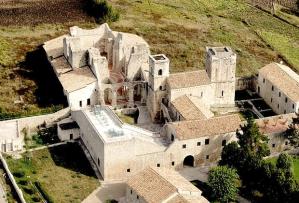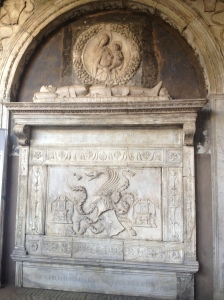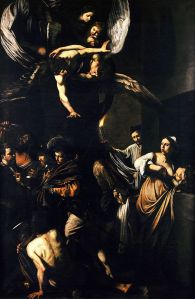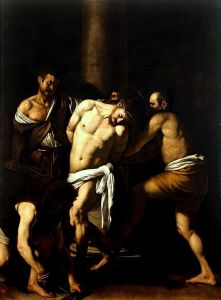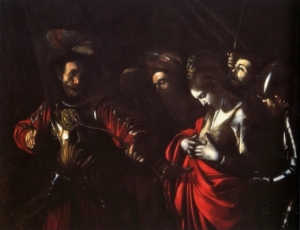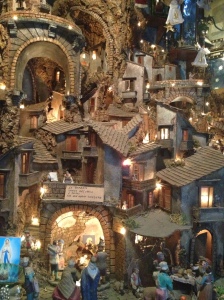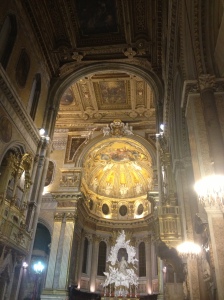© by Dr Maria Sannino
The little hamlet of Herculaneum was situated on a high cliff overlooking the sea, on the slopes of Mount Vesuvius, which dominated the bay of Naples, in the Campania region, South Italy. Two small streams, gliding down from the volcano, were flanking the cliff supported by ramparts. Colored wooden fishing boats were on the black sandy beach of Herculaneum. High fornices had been built right underneath the temples where the Gods would watch the sailors leaving for a fishing trip and would protect them. To the right of the temples area, a terrace had a white marble cenotaph in its centre. Decorated with marmoreal reliefs, it was dedicated to Marcus Nonius Balbus, a very important personality who became the patron of Herculaneum.
Over the centuries, the small village had been transformed into a resort town for wealthy people and during the forth century b.C., soon after the Samnites wars, Herculaneum became a flourishing vacation centre for Roman patricians. Many successful philosophers and writers used to gather here to talk about philosophy and poetry.
Imposing dwellings, up above the reef, had their terraces facing the bay. The view from those residences was magnificent. The spectacular bay of Naples was opening, like an amphitheater, right in front of them. Their beautiful sweet-scented gardens, were adorned with many marble statues portraying Greek Gods or heroes, according to the taste of the owner of the lodging. The timber roofs were elegantly decorated either with basreliefs or frescoes. A rare example of a well preserved carbonised wooden roof, with a set of garnished panels, was found on Herculaneum’s ancient shoreline, in the year 2010.
Most of the houses of Herculaneum had an inlaid coloured marble floor, the walls were painted with delicate frescoes, the internal gardens were surrounded by rooms which were used for different purposes. An efficient sewerage network, collecting the waters from the houses, the shops and the thermal baths, was placed underneath the roads and drained on the foreshore.
The recent excavations and investigations along those sewers, give us the opportunity to have an idea of the life and the sort of diet that the Herculaneans had, before the eruption of Mount Vesuvius of the year A. D. 79 covered every single inch of their town. The city was, in fact, buried under some 25 meters of a pyroclastic flow during one of the most catastrophic eruptions in the world. The liquid hot material penetrated inside the houses and preserved almost everything: from carbonized wooden furniture, doors and windows, to jewels, seeds, fruits, bread, payri scrolls and even clothes. For more than sixteeen centuries Herculaneum remained buried beneath the medieval town of Resina, which was built, on top of the ancient city, a few years after the eruption of Mount Vesuvius. It was only in 1709 when a worker, digging a well, discovered the theatre of the ancient buried town and the real adventure of the excavations of the ruins of Herculaneum began.
***************************
Roaming the streets of ancient Herculaneum means to take a trip into the past. Every corner has its own fascinating bit of history and culture, which are easily traceable in the well preserved houses and their gardens, which were recreated exactly as they were before the cataclysm of the year 79.
Crossing a high bridge and entering the town, the bastion used by the Roman army is still visible to the left. To the right, a huge mansion made the archaeologists think that this was a hotel. Its garden must have been so fragrant and so well looking. In fact, it had been planted with pomegranate and quince trees, among which beautiful scented roses were flowering into the sun. A street is leading to the centre of the town and towards the volcano. It is flanked by the remains of many elegant mansions and shops.
A hotel is in sight close to the man section of the thermal bath and its gym. To the left, a private basilica which was enriched with the statues of the most important emperors, is still beneath a thick layer of solid volcanic material. At the end of the road, just before entering the forum, which is still hidden under a huge amount of pyroclastic material, there is, to the right, the famous Collegium of the Augustales, a collegial shrine where the Roman priests (called Augustals) attended to the religious rites connected with the worship of the Emperor Augustus and the Julia gens. This large hall is decorated by frescoes portraying the mytholigical founder of the town: Hercules.
Exiting the suggestive shrine, an arch decorated by stucco reliefs will introduce the forum area which was facing the decumanus, the most important street in the city. This is a marvelous street flanked by imposing architectures. Here, well-preserved carbonized wood is astonishingly conspicuous: shelves, roofs, doors, windows are all clearly detectable. The shops are still decorated with frescoes and the wooden shelves are still hanging from the walls. Limestone drinking fountais, decorated with sculptures representing Gods, are located at each crossing. The decumanus was probably the location where a daily market was held, and many shops were aligned along the road.
A few impressive dwellings were facing the Decumanus. One of them would go down in history as many crucial wax tablets were found in a box inside one of its rooms. They were reproducing the important court case relative to Petronia Justa, a complicated process of the Roman time to determine whether she was a slave or a free person. Going down the forth street, called cardo, soon after the house of the Black Hall, considered one of the most beautiful homes in Herculaneum, the gorgeous women section of the thermal bath, is placed to the right. To the left, a series of stunning marble mosaics are visible in the houses facing the road. An amazing shop where terracotta amphoras are kept inside the original wooden shelves, still hanging from the wall, is right opposite the entrance to the thermal baths. Entering the apartment to the left of the shop, the eye is captured by a marvelous wall mosaic representing Amphitrite and Neptune. Continuing along the road the Samnite House to the left is worth a visit.
After the intersection, to the right, there is one of the most famous dwelling of Herculaneum. Known as the House of the wooden partition, which was used to give some privacy to the owner’s office, it also hosts an original wooden bed. Pristine mosaics and frescoes clearly show the importance of the family living here. Close to this building, an ironing wooden press, still untouched, gives us an idea of how laundries were organized two thousand years ago.
Returning to the crossing with the Decumanus inferior, which ends right in front of the Palestra (the gym), the small reliefs of winged Victories are traceable to the left. Reaching the next crossroad and turning to the left, a few shops, among which a laundry and a bakery, are aligned to the right. After the visit of the gym, returning to the intersection and continuing along the 5th cardo, it is possible to visit the most impressive Herculanean dwellings: the House of the deers to the right and Telefo’s house to the left.
Heading down towards the sea, the steep road leads towards the terrace of the marble cenotaph, to the left, and the temples aligned to the right which are overlooking the ancient marina. The underneath beach was the place where in 1981 a wooden Roman boat was uncovered, and recently, in 2010 an entire timber roof was discovered together with the set of the wooden panels which decorated it. It probably belonged to the House of the Relief of Telefus fronting the bay. The plaster casts of people who were waiting for rescue boats during the eruption are visible in the warehouses aligned along the beach of ancient Herculaneum.
Returning to the main road which takes towards the exit and turning back, it is possible to see, at a distance, the location of the spectaular villa of the Papyri from which a library full of bookcases with carbonised papyri scrolls was found. Unfortunately the villa is still under 25 meters of volcanic material that hopefully will be removed in the near future so to open, to the public, this area too.
For a walking tour of the ancient town, please contact me at belsannino@gmail.com

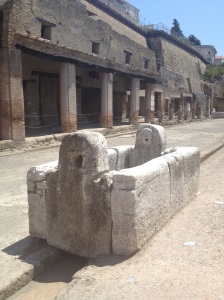
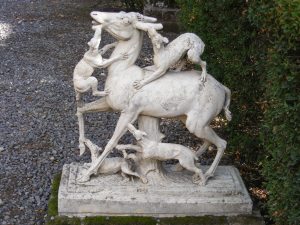
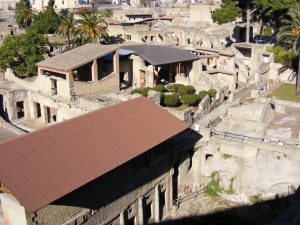
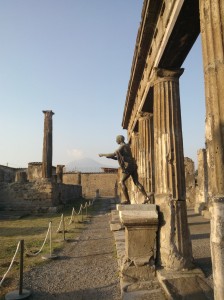


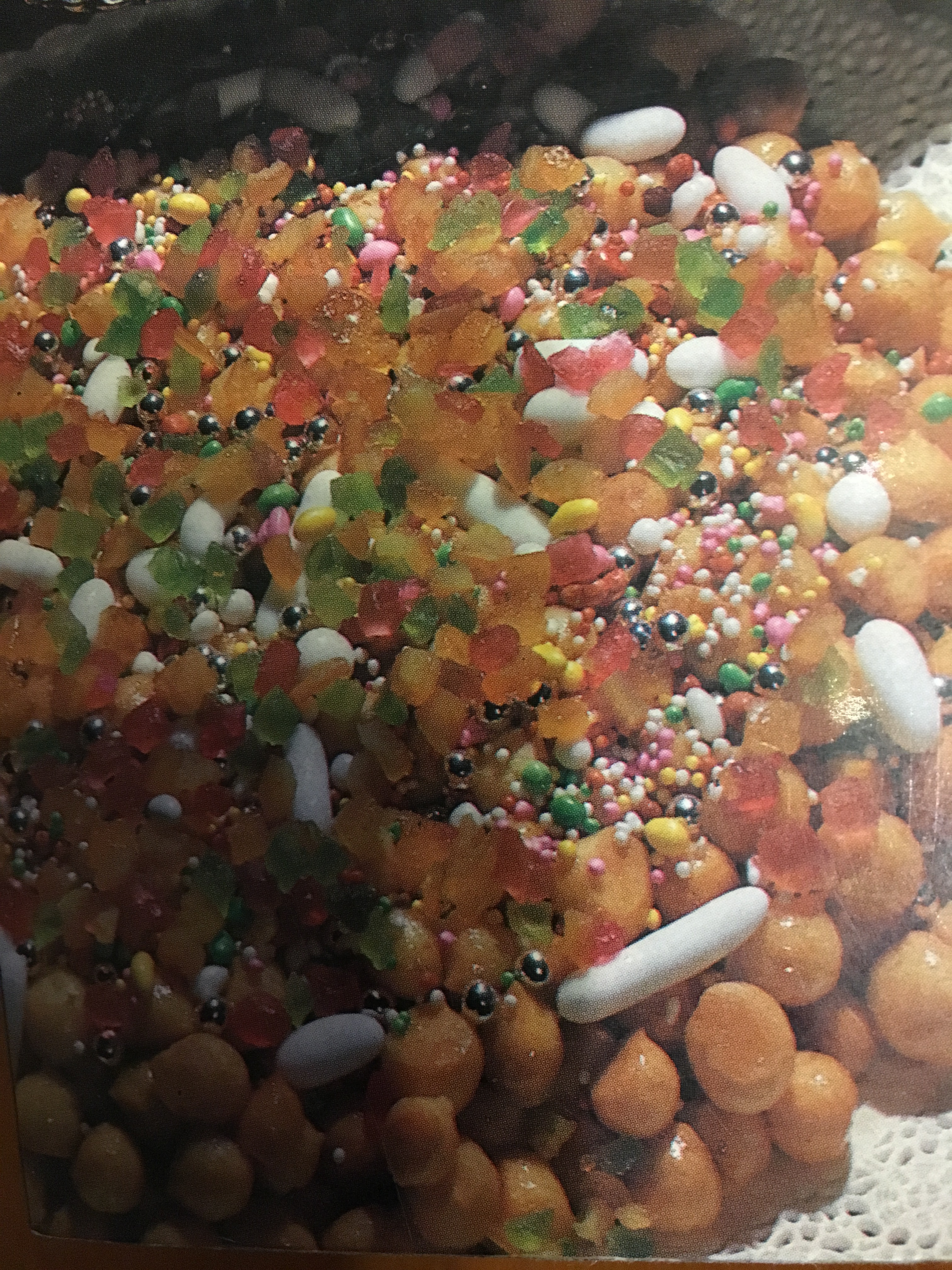

 ecame a very powerful military force that protected pilgrims travelling to and from the Holy Land. Thanks to their reliability and honesty many nobles entrusted them their funds and the Templars established such a secure international banking system that even kings and popes gave them custody of their own money.
ecame a very powerful military force that protected pilgrims travelling to and from the Holy Land. Thanks to their reliability and honesty many nobles entrusted them their funds and the Templars established such a secure international banking system that even kings and popes gave them custody of their own money.